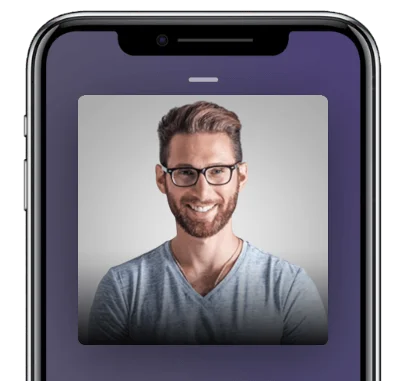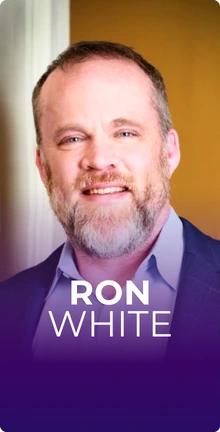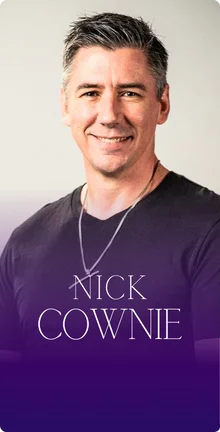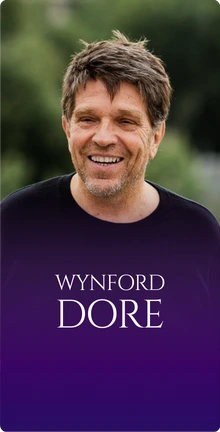It’s great to speak with you again. I’m so glad we finally had a chance to catch up.
You’re a world expert in memory so let’s start with memory. How did you get so enamored by these different memory techniques and go down that whole rabbit hole?
I always like to tell people you don’t run a podcast called Becoming SuperHuman because you were completely in love with yourself growing up. I had a hard time in school. I was the class clown. I had a difficult time keeping up. Fortunately for me in high school, I discovered prescription medication. I got on Ritalin. That allowed me to at least close the gap, catch up with my students, go to college and do all those great things. I was still struggling to learn. I was overcompensating by working a lot harder than everyone else. I was locking myself in a bedroom and taking a lot of prescription medications.
For my second degree, I got accepted to a condensed MBA program, which was two years’ worth of content in ten months. As most business-related things, an MBA is more about the network than about the content. I knew that I wasn’t going to be able to do what I used to do, which is lock myself in my bedroom, work twice as hard, catch up and figure it out on my own. I would have to go out there and network, go to events and meet people. About that time, I got lucky that I was interning in a VC office. I met someone whose wife and he had developed what I would later call a methodology for super learning. They’ve done a lot of training in speed reading, memory and accelerated learning. They agreed to sit down with me. I did a six-week course and paid a whole bunch of money to learn this stuff in person. The beauty of that skill is once you can read and learn faster, you can read and learn faster about everything. I got excited about the possibilities of this that I started digging into the neuroscience. I started digging into all the research that’s been done and all the past stuff that the Greeks discovered about memory to the modern-day researchers.

I went wild with it and about ten other different subjects from body language to public speaking to fixing some physical problems that I had with muscle tension. One of the things that I learned after business school, because I wasn’t sure what I was going to do, I tried to do this startup idea and it didn’t go anywhere is I said, “What if I applied that skill set to teaching online courses?” I sat down for a weekend and opened 45 browser tabs. I learned everything I could about what it takes to build successful online courses. I translated a lot of the materials with my instructors and the rest is history. We have over 200,000 enrollments in all of our different online courses.
Are those on one particular platform, Udemy or are they across multiple platforms?
We are everywhere. Our main thing is Udemy and we have our own premium academies for a couple of different brands. We have a brand that teaches people how to create online courses because it turns out we’re quite good at that. We have a brand that teaches people productivity, accelerated learning, speed reading and then we’ve got some other side stuff. I got interested in cryptocurrency and partnered with some experts. We’re on School Share, we’re on Udemy and on our own websites as well.
Between these different techniques, speed reading, memory techniques like memory palaces and other accelerated learning techniques, what’s your superpower? Is it across all three equally or is there one that’s stronger than the rest?
I have realized that I’m rather good at learning things and then digesting them in a way that I can break them down and teach them to other people. It’s funny because it’s a hyper-specific skill. I’m not very good at teaching people in person. I’m good at thinking about what it’s going to take for someone to learn something when I’m not there. Then immortalizing that learning experience in something that’s like a video or writing. It’s one of those skills you don’t set out to plan to have but I’ve realized that’s what I do well. In terms of superhuman abilities, if you want I can memorize 50 digits backward and forwards and that stuff. I always say that speed reading is a tool that you can pull out and use, whereas upgrading your memory like memory palaces and learning how to dual code and chunk into all these kinds of memory techniques is like an operating system upgrade. It’s like a superhuman upgrade.
Our brains remember pictures better than anything else. That's why a picture is worth a thousand words. Share on XI’m keen to learn some of the stuff and to have our audience learn this too. What do you think would be the best technique to start with?
In the past, I would have started people off with something simple like, “Let’s chunk some information or visualize some information.” We launched a radical experiment, which is called 5 Day Memory Mastery. The premise behind that is can we trick people into developing a killer memory without them even knowing what they’re doing? I’d love to walk your audience through the first exercise that I have people do, which is a nasty, weird experiment. If people go with the flow, at the end they’ll realize that this memory thing works.
Is this based on memory palaces?
Yes. The background knowledge is woven into the example. There are a couple of different key fundamentals that we need to know about the brain in order to enhance our memory. Those are built in and woven in. I want everyone to imagine that they’re standing facing the door of their bedroom. They’re looking into the bedroom. I want you to turn to the first corner and walk all the way to that corner. Turn to your right. We’re going to go counterclockwise around the corners of the room. In that corner, what’s the piece of furniture that’s there? For me, it’s a little planter there. What do you have, Stephan?
It’s a nightstand.

On that nightstand, I want you to imagine that there are two seahorses and imagine they’re doing the nasty. Then I want you to imagine that they left a little bit of a mess on your nightstand and so you vacuumed that mess up. Completely absurd, bizarre, weird, strange, sexual inappropriate image. We’re going to use that because the first fundamental is that our brains, our hippocampi are shaped like seahorses. You have one in the left hemisphere and one in the right hemisphere. Their full-time role is to determine what is and is not worth remembering. Our hippocampi like the bizarre, sexual, violent and strange imagery. That’s why we remember bad news. That’s our first thing. These two little seahorse-shaped portions of the brain. An interesting fun fact, hippocampus is Greek for seahorse, which is why that part of the brain is called the seahorse. I want us to go to the next corner going counterclockwise. What do you have in that corner of your room? Hopefully, everyone in our audience is visualizing what they have in that corner of the room.
I happen to have another nightstand that’s the exact same type.
On that one, I want you to imagine that you and Orion were snacking in bed and you had a jar of chunky peanut butter. In a fit of passion, you knocked down the jar of peanut butter and it went everywhere all over that nightstand. You’ve got this big, chunky peanut buttery mess. That is to remind everyone of the power of a phenomenon called chunking. If you ever wondered why phone numbers, credit card numbers, Social Security Numbers, any important number is broken into threes and fours, that’s because our brains can much more easily remember 408-351-7717 than they can remember 4083517717. Something about breaking the numbers down allows us to associate to each one of those chunks. By breaking information down, for example, when I do my demonstration of memorizing 50 digits, I’ll have the audience call out the numbers to me two at a time. Instead of 257138, it’s 25-71-38 and that already will make things more memorable for us. We have those first two symbols as we go around the room. Going to the third corner, I want you to imagine having a tangled ball of wires. What do you have in that third corner?
It’s a closet.
In the closet, I want you to imagine all that drawer of wires that you have in your house that’s full of old iPhone cables from 2007. Take that ball of wires and wrap it around all the clothes hangers and make a huge mess in there. In your mind, visualize that happening. It’s to remind us of something called Hebb’s Law, which states that neurons that wire together fire together. What that means is if we want to remember something, we need to connect it to the existing neural networks that we have, the existing memories that we have. I’m talking to the SEO experts. You know how Google’s page rank algorithm was so innovative because it looked at what pages linked to something and if those pages were important. It’s like how we can determine the importance of the connection of other things? It turns out that’s based on the way the brain works. If a memory is connected to let’s say memories of our loved ones or of a traumatic event or something that’s very important to us, it automatically gets a higher rank. That neural connection or that synapse gets reinforced. As we use that more and connect it to more things like a website being optimized for a search engine, that memory becomes more reinforced and more important. We remember that by memorizing a tangled ball of wires. In the fourth corner of the room, what do you have right up against the corner of the wall?
It’s a dresser.
I want you to take that and hammer a huge nail right into the middle of it. Then I want you to hang your favorite historical picture of all time. People in the audience might be thinking about the JFK assassination. For me, it’s that picture from the 1968 Olympics where the two African-American athletes have their hand up in the air. What’s your favorite historical image of all time, Stephan?
The only thing that comes to my mind at the moment is Martin Luther King in Washington, DC giving his I Have A Dream speech.
The reason we remember having that historical picture in there is to remind us of something called the picture superiority effect. It turns out, and research has proved this conclusively, that our brains remember pictures better than anything else and there are a lot of reasons for that. It has to do with survival advantage. It’s more important to remember the picture of something or the color of something than it is the sound. Let’s face it, most predators don’t announce their arrival. Our brains have developed to remember images much better. That’s why a picture is worth a thousand words and why we can communicate and understand meaning so much better through pictures. By choosing that historical image and putting it in the corner, we’re remembering the power of an image for a memory.
If you think about Martin Luther King, you don’t think about all the words in his speech. You don’t think about the date. You probably don’t know the date of that speech, I certainly don’t. You know the picture of the Washington Monument behind him crowded with people. You know the picture of him standing on the podium. That’s our second to last marker. The last one as we’re going to exit the bedroom, we just did a circle around the whole perimeter to all of the corners. I want you to imagine that you’re trying to walk out of the room. As you get there, a huge pin like on Google Maps drops and it almost clips you in the head. It hits the ground and breaks the tiles on the ground or it goes into the hardwood floor. That is reminding us of the power of location, which is a review of everything we did.
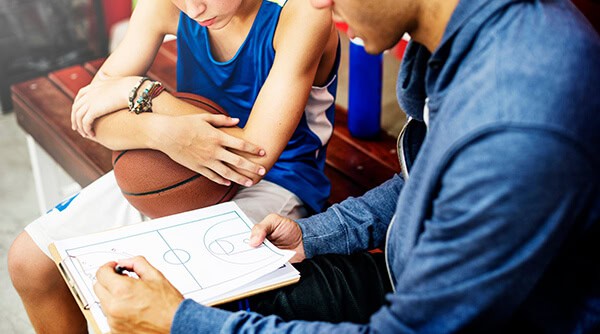
It turns out that our brains are insanely good at remembering location because this is a survival advantage. If you’re the caveman who forgets where we buried the winter food supply or how to make it to the watering hole, there’s a high likelihood you’re not passing your genes forward. What everyone in the audience just did, remembering those locations is something we do naturally and automatically. You probably remember the layout of every house you’ve ever lived in. You probably remember every office you’ve ever worked in. Chances are you even remember a lot of the hotel rooms that you stayed in or stores that you shopped in years ago.
If I ask people, “Where did you buy that shirt?” they go, “H&M.” I go, “Which location? Where did you find that shirt?” They go, “It was on a rack on the left side in the men’s section.” Our brains do this automatically, so we have this huge library of maps. A lot of people who play video games tell me they’ll be able to do what we just did and place these visual memories throughout the maps of video games that they’ve played over the last couple of decades because their brains are so adept at remembering locations. Everything we did is we created a memory palace, which is an imagined or real location that is filled with highly encoded symbols that remind us of the things we want to remember. We can create those symbols for numbers, names, faces, Bible verses. We can teach the method in a few minutes as we just did. A lot of what we do in our courses is teaching people how to adapt it. How do I memorize musical chords? How do I memorize parts of the body, foreign language words, credit card numbers, and things like that?
I love the exercise and the information that you encoded in our brains through that exercise.
Everyone’s homework is now to use your memory palace because that’s a huge part of accelerated learning. Even if you use the most advanced memory techniques, you still need to perform what’s called space repetition. You’ll remember that for days. If you walk through your bedroom and remember the chunky peanut butter and the X-rated seahorses, I want you to go out and explain that to people and use that information and tell them about the five fundamentals of memory. You’ll be amazed at how well you’re able to do it.
I learned about memory palaces in Secret Society Intensive run by Neil Strauss and it’s very handy. The context of learning was part of an intensive about pickup. It’s not relevant now for me, I’m happily married. If you could imagine you need some techniques to impress the opposite sex when you’re out in nightclubs or whatever. Card tricks, magic tricks, memory techniques or certain jokes and things like that would help break the ice. It will help you to appear funny, interesting and so forth until you build the confidence, it exudes out of you. You rely on the techniques until you don’t need the techniques anymore, then the techniques can fall away. Not that you would have no use for things like memory palaces and some of these other techniques that we’ve learned. It was very helpful for me at the time.
Our brains are insanely good at remembering locations because this is a survival advantage. Share on XThat feels to me like using a five-megawatt nuclear reactor to fry an egg. It’s like you have this tool that’s so incredibly powerful and it can do so much stuff, it’s very impressive. If you’re on the outside and you don’t know what I’m doing, to hear me memorize 50 digits and then memorize it forwards, backwards, work my way out from the middle, it sounds impressive. You have to understand for me it’s easier than reading it on a piece of paper. I’m more likely to get confused on the piece of paper and skip a line than I am in my memory palace working around. Anyone who has seen this technique or played with it is not in the least bit impressed because it’s quite easy to do even if you had a few drinks in the bar and you’re trying to impress someone.
How long have you been using memory palaces as a primary memory retention technique?
I was a bit of a stubborn one. A lot of people in the traditional memory world like Harry Lorayne who’s the godfather of modern memory improvement, let’s say that if you do the visual encoding well enough you don’t need a memory palace. For a long time, I thought memory palaces were very much overkill because they are like the nuclear option. They’re incredibly powerful you would never want to use one like when you’re reading a book. You don’t need it. Then along about when I did my TEDx Talk years ago, I’d use them a little bit for vocab words here and there, learning Russian and stuff like that. It wasn’t until I needed something that merited doing it which is when you need the exact order and you’re worried about skipping that one line in your talk, which happens to be about memory. That was almost exactly to the day when I sat down and I was like, “I’ve been teaching this memory palace technique. I’ve been telling people it’s probably overkill unless you’re learning a speech. Let’s go ahead and draw one and do it.” I put it on the board to show people, like a magician revealing the trick, “You’re here in my memory palace and now I’m going to walk you through the rest of it.”
It opened this world up to me. This technique is so powerful that you have to worry about the other side, which is I can’t reuse that memory palace ever because years ago I used it for my talk and I can’t clear it. I talked to Nelson Dellis, the four-time USA memory champ about, “How do you clear your memory palaces because it’s so sticky that you get into this position?” After that experience, I started using them for everything. A lot of the content that I put out after that in our courses was about adaptation. One of my hobbies is learning languages and one is Russian, which is very hard. It not only has three grammatical genders and a ton of different tenses but it also has cases, which is a concept that people don’t understand unless they speak German or a Slavic language. This idea that I change you by performing different actions on you or if I am working with you or I see you, there’s a different name for Stephan. Learning that was hard until I built a simple memory palace which reminded me of the rules. It told me if I work with Stephan and Stephan is male, then I work with Stefenom instead of Stephan, and building that memory palace. It’s been amazing the stuff that I’ve been able to apply it to, music theory, phonetic alphabets and all kinds of different weird stuff.
Do you eventually run out of locations for these memory palaces like you’ve got the bedroom where we just did that one exercise?

It is a great question because I always tell people, “Memory palaces are free.” A lot of the people that I’ve interviewed on my show are world memory champions. I asked them, “What do you do when you’re training and you need more memory palaces?” They go, “I need study breaks. Instead of going to the supermarket across the street, I go to two streets down. I mingle through the aisles for five minutes and then I create a new one.” You’d be surprised at how many places you interact with on a daily basis. The people who are the absolute best at this in the world are using entire cities. Think about how much density you have. In your home city, you know your entire neighborhood. You know the neighborhood by your office and you can go crazy on an entire city sprawl. I know Tel Aviv like the back of my hand. I know every street, I know every shop. You’ll be shocked at how difficult it would be to run out of them.
Do you think it matters if somebody believes they have a bad memory as far as the effectiveness of this?
Absolutely. We teach that in our course. We had an interesting phenomenon happen, which is we teach the chunking method. We teach the neuroscientific fundamentals first in our longer course where it’s not five days, it’s ten weeks. Memory is four weeks of that. We teach the fundamentals in the first week. A lot of set up, test your baseline memory, here is how your brain works. We were getting people posting on our Facebook group, “I can’t believe this works. I’m only in week one and my memory has already improved.” I was scratching my head because I was like, “The real content isn’t even unlocked yet. It drips out over the course of four weeks.” We did a little bit of research and we messaged some of these people. They were like, “I’ve been chunking and I had more confidence in my memory.” I call it the intellectual Pygmalion effect, which is if you believe you’re smart, you’re way more likely to be smart. If you believe you’re dumb, intellectual golem effect, you’re more likely to be dumb. The same is true of your memory. If you walk around as many of us do, how many times have you talked to someone and they’re like, “I have the worst memory,” or they apologize, “I’m so sorry I forgot your name. I have the worst memory.”
Like, “I’m terrible at remembering names.” It’s a self-fulfilling prophecy.
It’s become almost as prevalent as like showing off how little you sleep, which is a whole different thing that affects our memory. People do this all the time. Every single time someone asks, “What do you do?” I go, “I teach courses.” They go, “What courses?” I say, “Memory.” They say, “I need that. I have the worst memory.” This is why we created a lecture on this. Step one before you even learn any of the memory techniques, stop thinking, saying and believing that you have a lousy memory because you don’t. I know many of the world’s top memory experts, people who can memorize a deck of cards in under twenty seconds and every single one of them will tell you, they were like you and they thought they had a lousy memory too.
I used to believe I had a lousy memory, that my memory was degrading over time. It’s a terrible belief. There are no beliefs that are true, according to Tony Robbins. They are either empowering beliefs or disempowering beliefs. That was disempowering belief and a self-fulfilling prophecy. I learned this from my friend, Amy Africa, who’s got a whole brain lab and stuff. She told me that we have multiple memory gadgets in our brains. Different parts of our brain are remembering different types of things. There’s a different part of our brain that handles numbers versus visual memories and things like that. What I found that was very empowering was to recognize that I’ve been amazing at remembering numbers my whole life. I continue to be very good at that. I was able to find evidence to the contrary that I have an excellent memory and it’s quite intact. Then I could turn that whole belief and limiting pattern around and start to build more evidence that I have an improving memory over time.
That’s a perfect way also of explaining what we do and what we just did for people. When you’re trying to lift something, they always tell you to lift with your legs, not with your back. It’s partly because your back is a more delicate instrument with all the muscles and bones but it’s because your legs are the strongest, largest muscles in your body. The quads, glutes, and hamstrings are the strongest muscles in your body and there is less that can go wrong there. What we do is a very similar thing, which is your episodic memory might not be that strong. Your auditory memory might not be that strong. Your autobiographical memory may or may not be strong. There’s a lot of research that shows the things that you think you were wearing the blue sweater, but you were wearing the red sweater that night.
Your locational memory and your visual memory are the strongest muscles you have. As a side tangent, your memory for smell and taste which are wired into the reptilian brain are way more powerful, but you can’t remember someone’s birthday by what they smell like on their birthday. What we do is exactly the same thing, lift with your legs, not with your back. If your location and picture memory are the most powerful ones, let me teach you how to use those for everything from phone numbers to Bible verses. Let’s use your visual memory for everything because those are the strongest muscles you have.
Let’s teach our audience how to put a name to the face, how to use our visual cortex to remember people’s names. You hear one of the most commonly recited misbeliefs relating to memory is, “I’m terrible with names.”
When people ask me, “What’s going to give you the most benefit in your life?” They always think that I’m going to say, “Learn a foreign language because I’ve learned three of them or learn music because it trains your brain and it works out the brain.” I always say it’s the people skills. It’s memorizing someone’s name, the name of their children, what you talked about the last time you talked with them. Especially for people in sales, business, human relations, anything like that, if I come to you and I say, “Stephan, the last time we spoke you were telling me that Orion had some foot pain. I wanted to check if that’s still going on and how is she feeling.” Think about how much more important you understand that you are to me and how much more emphasis I have placed on our relationship. Names and faces are important and it’s the simplest thing in the world. All you need to do is visualize one of two different ways. If it’s someone named Stefan, if I know someone named Stefan, I can visualize you and that Stefan or I can find a trait that you share. I can picture the two of you hanging out together. It’s simple. I connected you to someone named Stefan Granado, which is important because I didn’t know if your name was Stephan or Steven because of the way it’s spelled right. His name was Stefan but by visualizing you and him together, it was easier for me to remember that your name is pronounced Stephan.
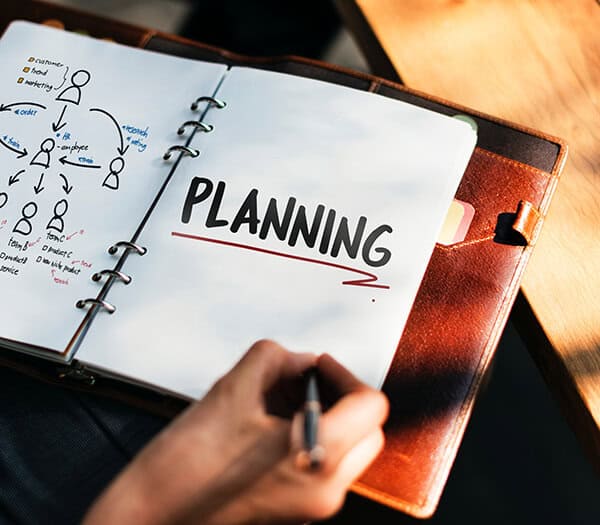
If it’s someone named Mike, I can picture them with a microphone onstage with Mike Tyson. I’ll create multiple layers so that if I forget, “What was he holding? He’s with Mike Tyson. He must have been holding the microphone.” You can do this for any name. For Orion, I would picture Orion’s belt and I would picture her wearing the belt. Picture her in a dress with a nice belt made of stars. For foreign language names, like let’s say that we have someone named Sanjana, a fairly common Indian name. We can picture her hanging out in the sun with Jenna Maroney, a famous YouTuber or someone we know named Jenna. We can break the name down into its component symbols and then create visualizations for those component sounds.
What if there are lots of components to remember? Do you formulate those into a movie or do you use still images?
Over the years, I’ve discovered that movies and scenes are better. Another way to do it is having details: Sun and Jenna or Sungeeta. I could picture this person, Sangeeta is a female name. She’s sitting in the sun and instead of putting sunscreen, she’s slathering herself with bulletproof organic grass-fed ghee. For ta, I could put like she is waving, “Ta-ta,” to someone like a British wave like the queen would do. I want to emphasize, the audience are probably like, “This guy is off his rocker.” The stranger and more bizarre, more embarrassing and inappropriate these things are, the more memorable they are. That’s point number one about the hippocampus. It’s ridiculous to picture this woman that you met in a business context lathering herself up with grass fed ghee, but these images are only for you. Please do not sue me if you get a sexual harassment lawsuit because you told them what your symbols were. They’re for you. Don’t share them with people. The more ridiculous they are, the better they work.
How does this apply to accelerated learning? Let’s say that you’ve got a thousand-page book to read like The Art of SEO. How do you read this in a fast-enough fashion but still retain the information? Are you building all these memory palaces as you’re quickly scanning the pages, speed reading through it? What’s your process?
I don’t use memory palaces for books and there are a few different reasons for that. One is most of the time, unless we’re doing a dissertation, we don’t need to memorize the contents of a book. We need to understand four to five, in the case of your book, 40 to 50 key takeaway messages. I utilize space repetition systems. I highlight and then I highlight my highlights. I use software systems to remind me of the things that I want to learn. Let’s say I’m sitting down to optimize a page, I’ll scroll through all my edits. I’ll have images that remind me of what those things mean. It’s like why waste good memory space when I can flip through the book in a digital version, in a paper version and just look at my highlights quickly? That means that I’m not highlighting half the page of every page. I’m being strategic and highlighting key takeaways, points, and ideas and then summarizing them in my head with visualizations that go along with them.
The biggest best thing that people can do to accelerate their learning is to plan their learning ahead of time. Ask the questions of, “What is it I’m trying to learn? Why am I trying to learn?” We know a lot from one of the first researchers in adult andragogy, Malcolm Knowles, that there are a couple of different requirements for the adult brain that the child’s brain doesn’t need. Adults need to know why they’re learning what they’re learning. They need to apply previous knowledge. Adults have the knowledge, they need to feel like that knowledge is being valued and respected in the learning environment. They need to know exactly how they’re going to apply the knowledge, a pressing need and a few other different things that we can assume they’ll have. That’s different from a child’s brain.
Know that and go into your learning with those assumptions. We have people sit down and write, “What are the things that I want to learn and why?” By doing that, you’re going to enhance your focus. You can then do the SQ3R: survey, question, read, review, revise. As you’re surveying, you’re flipping through very quickly in something we call pre-reading because SQ3R is a mouthful. You’re flipping through very quickly, generating questions, getting a lay of the land, figuring out and creating your own cognitive biases so that your focus is enhanced. When you read, you’re trying to prove or disprove your thoughts about what’s going to be in the text. You’re trying to find the things that you expect to find in there. That’s a powerful tip for making any kind of reading, especially a very dense book a lot easier.
If you have a big enough why, whatever you’re trying to accomplish whether it’s learning a new thing, a new skill, a discipline or whatever is much easier. It’s more meaningful. You’re more likely to get the result. One little distinction you could add to this is have them visualize having that result and having that skill and using it. Let’s say that I want to learn Hebrew. Visualize what it’s going to be like to be able to speak fluently in Hebrew. Walk into the streets of Tel Aviv and say hi to people and talk and start up conversations and being able to have powerful conversations completely in Hebrew.
I love the element of visualization as well not just because of the memory thing but because of the Tony Robbins, Napoleon Hill, the power of visualization and Law of Attraction and manifesting that reality.
I thought of this YouTube video I had seen with Rich Schefren going through his process of reading books and retaining the information. He does the highlighting. What he does then is he hands the book to his assistant who will cut the binding off and scan all the pages. He will then have the highlighted bits transcribed or pulled into a separate document, which he then reviews. The pages that don’t have highlighting are removed from the pile of pages. The book is rebound together with just the highlighted bits.
If you believe you're smart, you're way more likely to be smart. If you believe you're dumb, you're more likely to be dumb. Share on XI’m going to make your life so much easier and probably Rich Schefren’s life as well. If you read on Kindle, Amazon will compile all of your highlights. I think it’s Read.Amazon.com. You have one of two things. You can use the Evernote Web Clipper. Export those highlights into Evernote, which I did for years and then review them. I discovered another thing, Readwise.io, where you give your Amazon login to them. You give your iBooks log in to them and if there are any books that you read in a paper, you give them the list of those books. They will not only give you your own highlights in a daily, weekly or monthly digest, they will bring them up using a random algorithm so that you don’t get the same ones every week. For books that you’ve read on paper, they’ll give you other people’s highlights. It’s a nice little Digest in your email inbox. We’re looking to do some partnership with them because I love that. In the past, I’ve told students to export it, put it into spaced repetition flashcards software but this is way better right in your email inbox.
What if you don’t enjoy reading off a Kindle or an electronic device, you’d rather read off actual physical books made out of paper?
There’s a cost to that not just in the weight. When you read 800 words a minute a one-week or a two-week trip, you’re going to have to bring four or five books if you plan on sitting on the beach and relaxing and reading. You could do that. Amazon does some nice stuff with crowdsourcing and figuring out what other people are highlighting. It’s probably not going to be the exact same thing though. Rich is doing a lot of work that he doesn’t necessarily have to do because you can take pictures. His assistant could take pictures of the pages that have highlights and Evernote would automatically do the optical character recognition on it. You don’t even have to cut the binding off. It will correct any angle of the page. I’m trying to save some books. When you said, “Cut the binding off the books,” I was like, “No, what a pity.”
Do you have an equivalent to his YouTube video where you walk through your process of speed learning and speed reading these books?
I’ve got some stuff but not on YouTube. We’ve got some stuff in our masterclass like how I read books, how I manipulate the Kindle. There are a couple of features of the Kindle that I figured out how to use to do all the pre-reading without losing your spot. In an eBook, you can’t just stick your finger in and come back to the location. We probably should put that on YouTube at some point.
You should do a video reply to Rich Schefren, “This is a pretty cool technique and it could be so much better.” Let’s talk about some of the apps that will help somebody in their process of becoming a super learner and superhuman. Blinkist is a cool app and there are some speed-reading apps that will train you to not recite in your head what you’re reading.
I’m a little bit against apps because it’s like using hydraulic legs to do your squats. We want to train the eyes in speed reading to make these larger jumps and do the work for you that the app is doing for you. There’s a lot of research against these apps so I’m not big on them. We built a whole website where people can test their memory. We’re building in some reading speed tests as well there. There are games that help people improve their ability to recognize words outside of the fovea or the main focal range in the eye. People can check those games out for free at Games.BecomeASuperLearner.com. It’s mobile-friendly. People can check them out, test their memory against other people and see how well they do with all kinds of different challenges remembering pictures or remembering numbers. I would recommend that. I also love this Readwise.
Is there a game in there that will help us to shut off our inner voice that’s reading with us because that is holding us back?
A common misconception that even I had before we worked with the vast number of people is that you can shut it off completely. The research doesn’t support shutting it off completely, but you can definitely minimize how many words you’re hearing like what proportion or what percentage. The best way that we’ve found to do is I love to use weightlifting examples but progressive overload. If you go into the gym right now and you try and deadlift 1,000 pounds, you’re not going to be able to. Which is why going on in one of these apps and selecting 1,000 words per minute isn’t going to work. If you go in the gym and you operate right at your level like you can barely do seven reps, next week you’re going to be able to do a little bit more weight and a little bit more weight. That’s exactly how we do it. We tell people, “This week try to do 250 words per minute.” You want to be operating right at that level where you’re not quite sure you’re comprehending everything you’re reading at the speed. Then once you feel it’s comfortable like in the gym, when you feel like, “I could do ten of these at this weight,” that means it’s time to move up so that you can barely do seven.

What will be an application specific to anything that we covered in this episode in terms of this progressive overload? A use case of progressive overload as far as remembering people’s names?
A good application is to go out and try and remember as many names as you can. I am notorious among my circle of friends that every time someone comes to the table, “Can I clear that plate? Can I bring you the check?” I ask their name. I know most of the waiters and waitresses around all the restaurants that I go within a one-mile radius off my home because I’m always practicing. Also it’s a powerful way to see the benefits. If you and three other people in the restaurant are raising their hand and going, “Excuse me, check please,” and you shout out, “Michelle,” she’s immediately going to pick your voice up. That’s a good thing and the stakes are low there. Go as many as you can and then next week, try and do more. I like giving that example because it makes the world a better place. If we all took the time to learn one another’s names, even the person swiping your groceries at the grocery store quickly look at their name tag and say, “Thank you so much, Michelle,” the world would be a better place.
The sweetest words to our own brains are our own name.
That is Dale Carnegie who said, “Remember that the sweetest sound in any language is a person’s name.”
If we remember their name and we use it that shows respect, that shows that we care about them, that will make an emotional connection called relatedness. Do this with people that you may never see again or that you don’t see any opportunity for you to get something out of them. It’s interesting to see how people treat others where they don’t see any opportunity to get anything from them. If somebody is rude, dismissive or abusive even with somebody that they don’t see is valuable to them, that’s very telling about whether you should have any kind of relationship with that person. One thing that you mentioned in this conversation was dual code. You were talking about like an operating system upgrade. What is dual code?
Dual coding means that we’re giving our brain more than one connection to a piece of information. A lot of times the way that we do it is you have the sound. I teach you a word in Hebrew, which is a tricky word Rahamim, which means mercy. It’s a tricky word because in Hebrew, so many times something that we think is singular like bicycle is plural. In this case, it’s mercies. Then what I would do is I would not only give you the sound Rahamim but I would also connect it to, let’s say you probably know someone in Israel named Rakel. You probably know that mim if you looked at it in Hebrew, I could create a visual symbol of Rakel in a hot Tel Aviv summer and giving you water and we would go from there. In addition to the sound, we have a picture. In addition to just any picture, we have that connection to Rakel and another word in Hebrew that you’re learning, which is mim. That’s not just dual coding, that’s quadruple, pentagonal; the more the merrier. There’s no such thing as too many. It’s stacking. If we go back into your memory palace, that is over by the closet. Do you remember what’s in the closet?
The more bizarre, more embarrassing, and inappropriate things are, the more memorable they are. Share on XIt’s a tangle of wires and that has to do with neurons that fire together and wire together.
The system works.
If somebody wanted to learn your system and become supercharged and a super learner, where should they go and what are the options?
All of the stuff that I do with learning and memory is at SuperLearner Academy. The easier way to remember it since people come to us because they have memory challenges is Memory.School. If people want, I’m more than happy for them to take a completely free copy of our five-day memory challenge, which will teach you everything you learned here and much more. It’s really good. We’re a little bit worried that no one’s going to buy our main course because this is such a good course. They can get that at Challenge.BecomeASuperLearner.com.
Thank you so much. I’m inspired to delve into this area myself and I’m sure our audience as well. What if somebody wanted to work with you more directly, could they get coaching from you? Could they get mentoring?
I don’t do any coaching on the memory stuff, but we launched a mastermind where we are going to be doing monthly challenges with experts such as myself. I’m going to do a memory challenge for 30 days. We’re going to do a willpower challenge. I have a call with Benjamin Hardy to try and pitch him on a willpower challenge next. The best way for people to learn about that is go to JLE.vi/Mastermind. I’m in there doing the challenges. If you ever wanted to know, “How does this Jonathan Levi guy learn something new like Tai-chi?” I’ll be in the challenges with the experts dissecting what I’m learning. I launched the mastermind because I want to do cool monthly challenges and explore the outer bounds of how much I can learn in a month.
Thank you, Jonathan. Thank you to our audience for your rapt attention. Turn that into action by applying this stuff. I will catch you in the next episode.
Links and Resources
- Jonathan Levi
- Facebook – Jonathan Levi
- Twitter – Jonathan Levi
- Instagram – Jonathan Levi
- Youtube – Jonathan Levi
- Becoming SuperHuman Podcast
- 5 Day Memory Mastery
- Games.BecomeASuperLearner.com
- SuperLearner Academy
- Memory.School
- Challenge.BecomeASuperLearner.com

